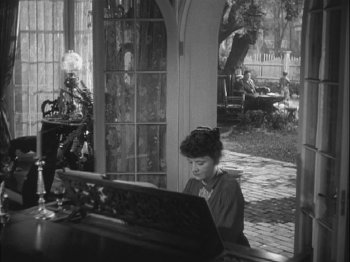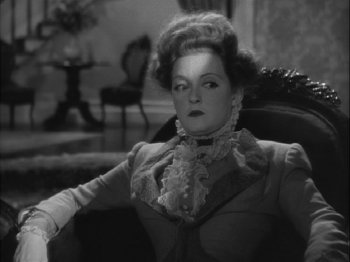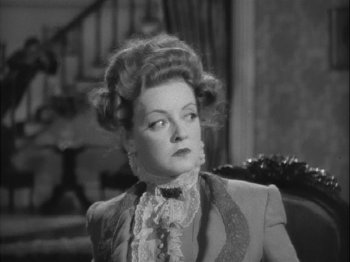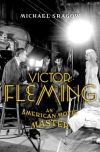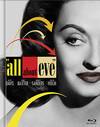





The Little Foxes (1941)
Cast | Crew | Awards | Articles | Screen Caps Gallery | Bibliography | Links | Image Credits
| Gallery 3 |
The Use of Deep Focus in THE LITTLE FOXESDeep focus is a photographic technique by which all objects in front of a camera, both near and far from its physical placement, are sharply defined. Made possible by the development of deep-focus lenses in the late 1930s, the technique required highly sensitive film and a heavy increase in lighting, all of which were difficult to work with on their own, let alone in combination. However, in the 1940s, cinematographer Gregg Toland pioneered new uses of deep-focus photography in such films as CITIZEN KANE (1941), THE BEST YEARS OF OUR LIVES (1946) and THE LITTLE FOXES (1941). The cinematic effects of deep focus are multiple. First, whereas shallow focus (in which one part of the screen is in focus and the rest is blurred) draws the viewer's attention to whatever element of the scene is in focus, deep focus is much more ambiguous -- allowing the viewer to choose for herself which parts of the scene to concentrate on. The resulting shot requires more active participation on the part of the viewer -- who must decide for herself what deserves the most attention --, and at the same time, challenges the director to develop new ways of calling his or her own points of emphasis to the viewer's attention. Second, deep focus heightens the viewer's sense of reality when looking at the scene -- drawing her in. Normal human sight mandates that some objects appear in focus when they are the focal point of the viewer's attention, and other objects in the range of view remain blurred. But despite these constraints, the human eye is capable of changing its depth of focus extremely quickly, permitting the viewer to concentrate on whatever she fancies seeing at the moment. Though upon first consideration, shallow focus might seem closest to normal human sight (one plane in focus, the others blurred), in actuality, because deep focus allows the entire scene to be in focus at the same time, it comes closest to human sight by allowing the human eye to focus on any part of the scene at any given time, just as in reality. This advantage, combined with the fact that deep focus minimizes the need to break up a scene into a series of shots (cutting from one part of the scene to another -- as if the viewer were turning her head back and forth, watching a tennis match), serves to heighten the viewer's sense of objective reality when watching a film shot in deep focus. Note the use (and non-use) of deep focus in the shots from THE LITTLE FOXES below: |
|||

SHOT 1: |
|||
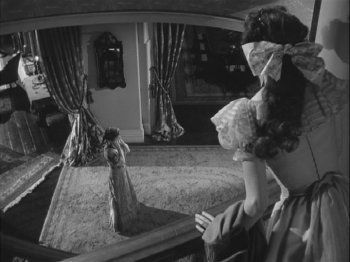
SHOT 2: |
|||
SHOTS
3 & 4: |
|||
Perhaps most interesting in the whole film is the non-use of deep focus in the scene depicted in this series of three shots. At Wyler's request, when Horace has his heart attack, Toland switches from deep focus to shallow focus, subjectively drawing the viewer's attention, not to the figure of Horace struggling up the stairs to find his medicine, but instead to Regina's face and her reaction to the struggle she knows is taking place behind her.
|
|||
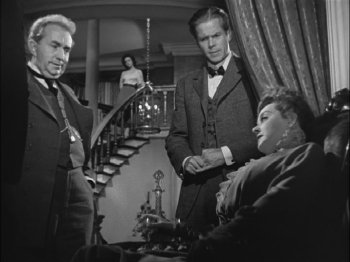
SHOT 8: |
|||
|
Gallery 1 | Gallery 2 | Gallery 3 |
| Now in Print! |
|---|
| Now on DVD! |
|---|
Buy Videos & DVDs |
|
Buy Movie Posters |
|
Buy Movie Posters |
|
Classic
Movie Merchandise |
|
![]() Printer-friendly version.
Printer-friendly version.
![]() Return
to the top.
Return
to the top.
Last updated:
March 10, 2011.
Reel Classics is a registered trademark of Reel Classics, L.L.C.
© 1997-2011 Reel Classics, L.L.C. All rights reserved. No
copyright is claimed on non-original or licensed material.
Terms of
Use.




